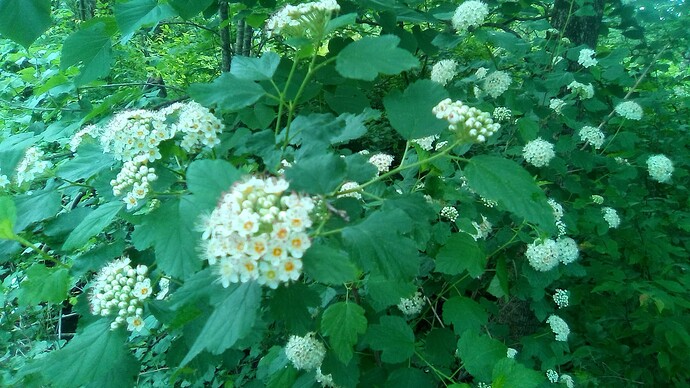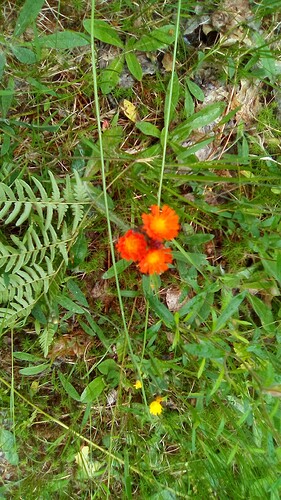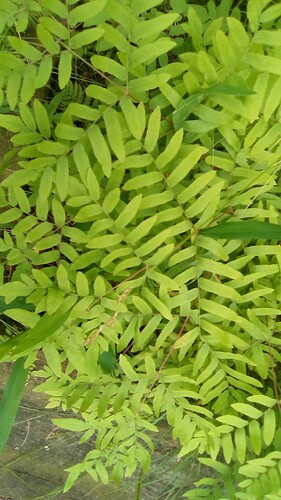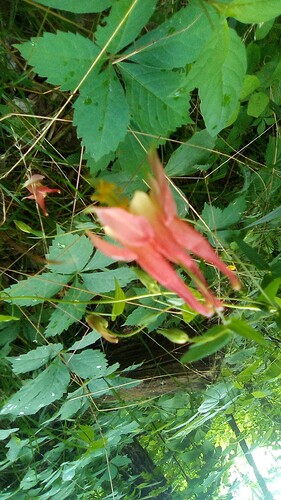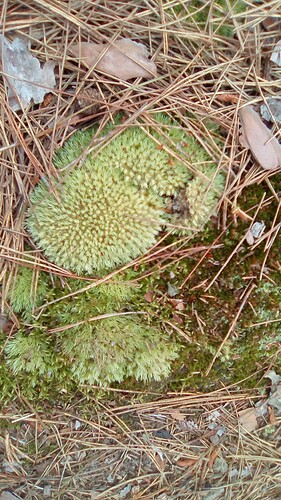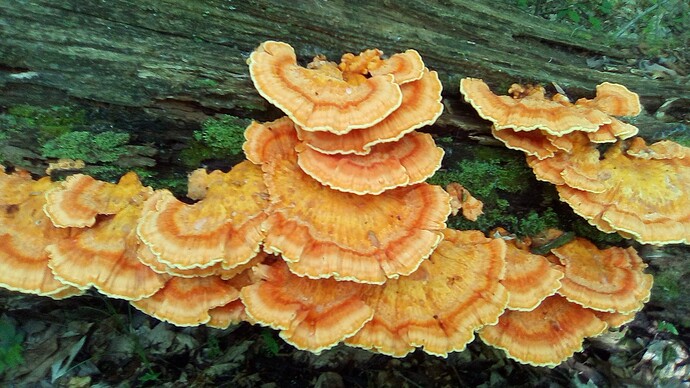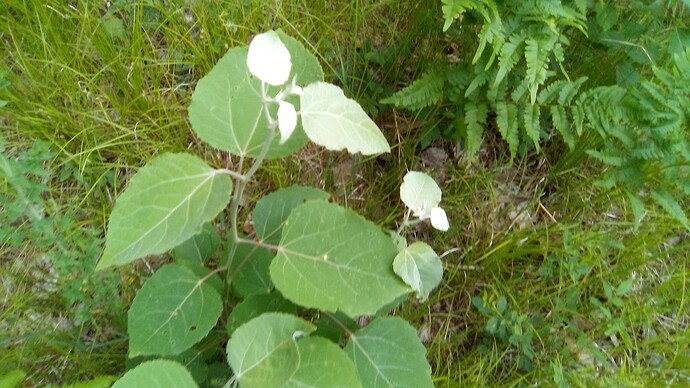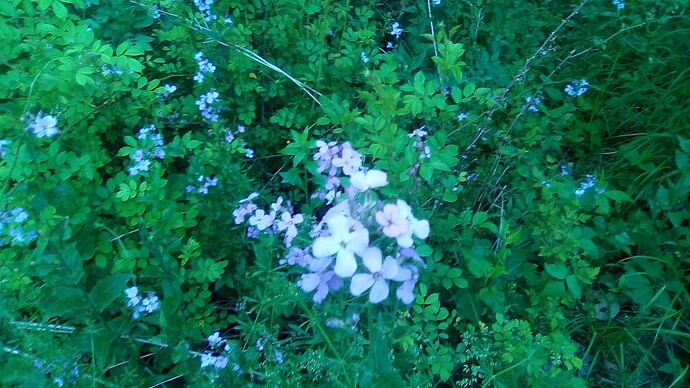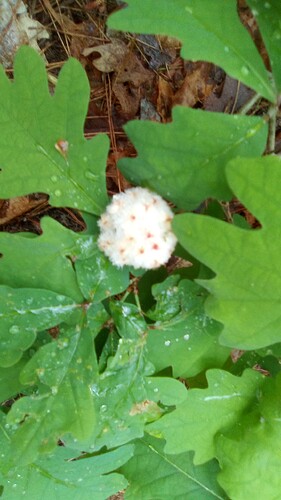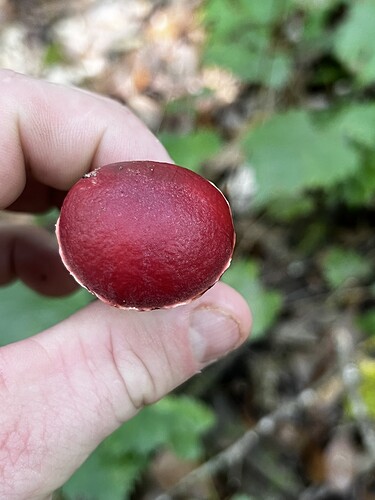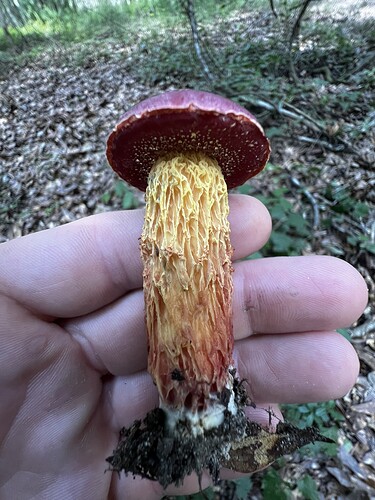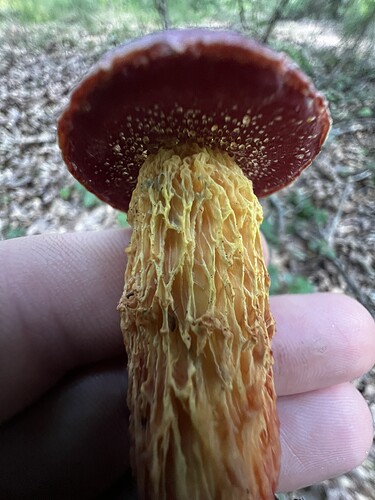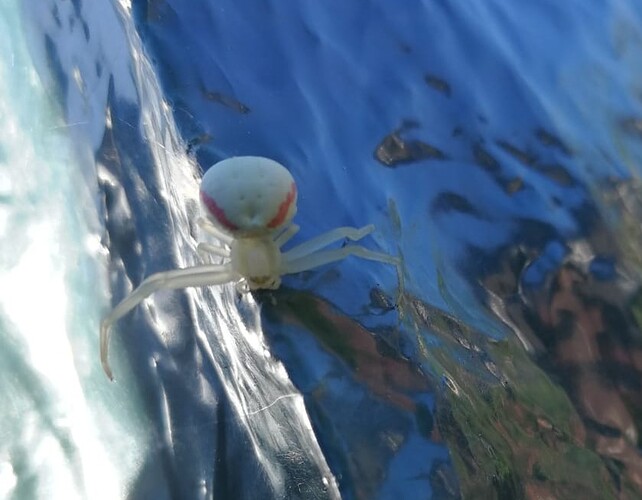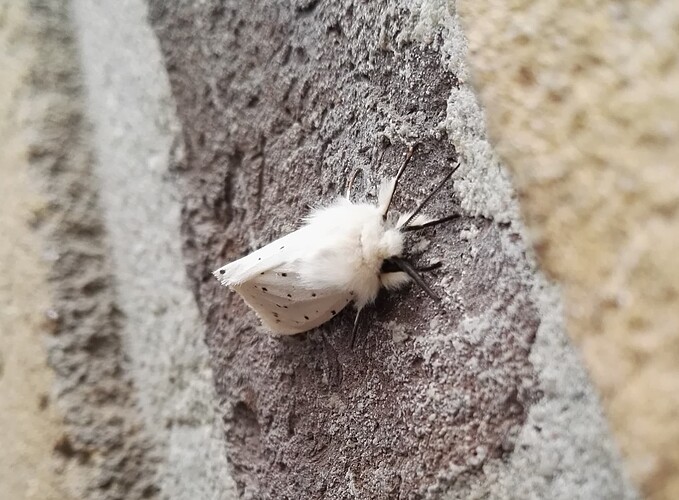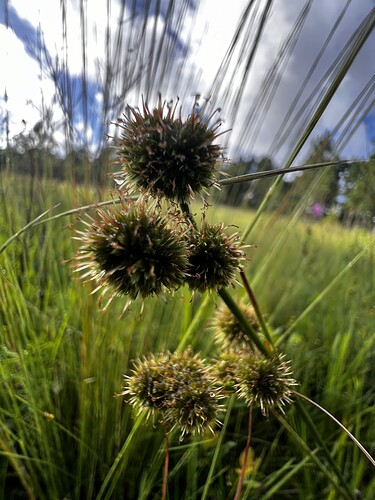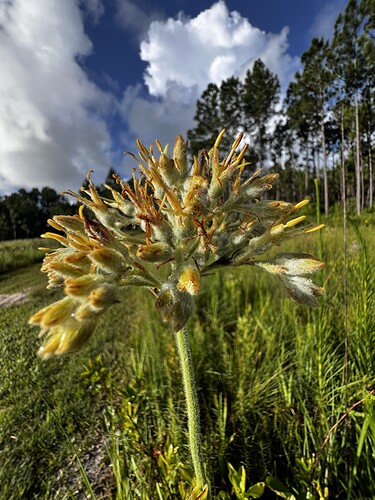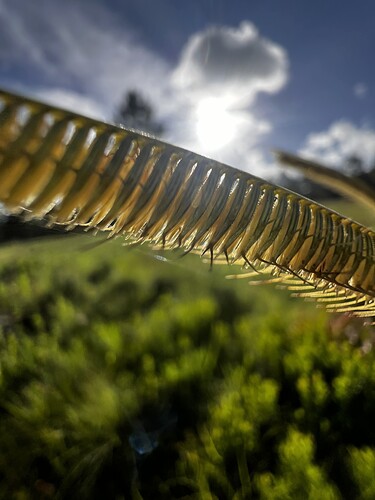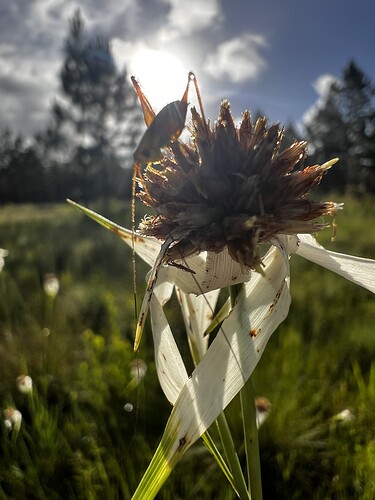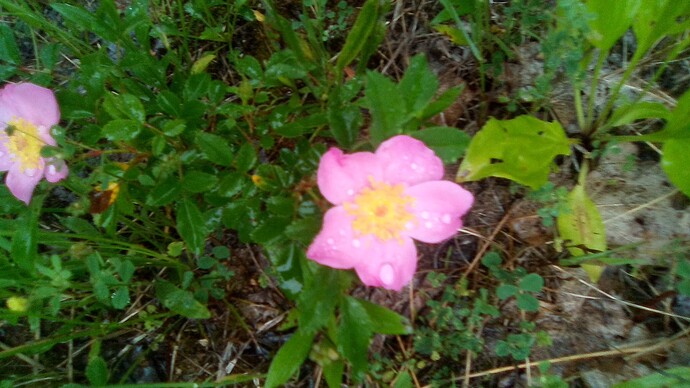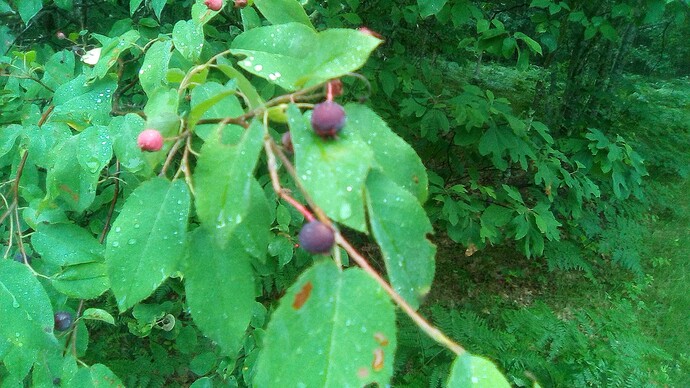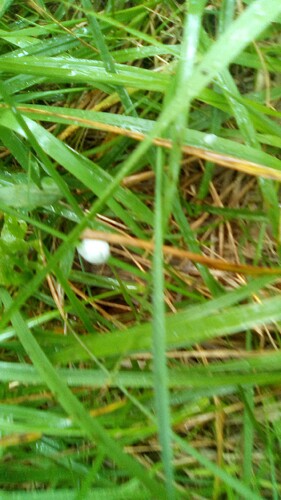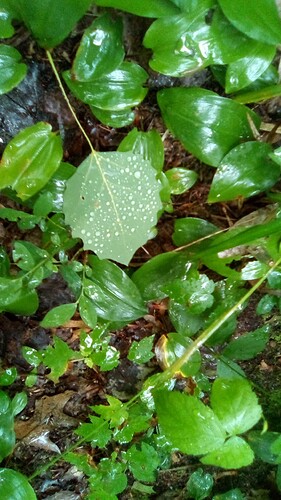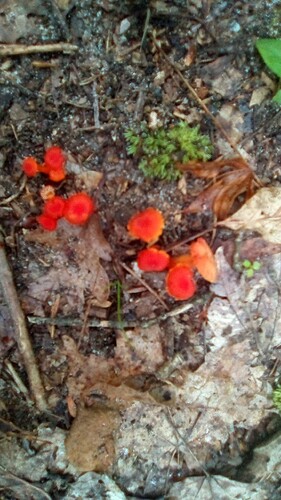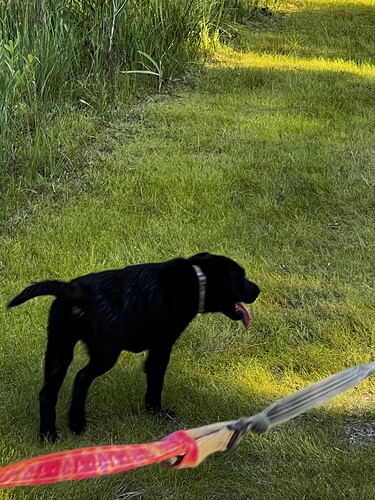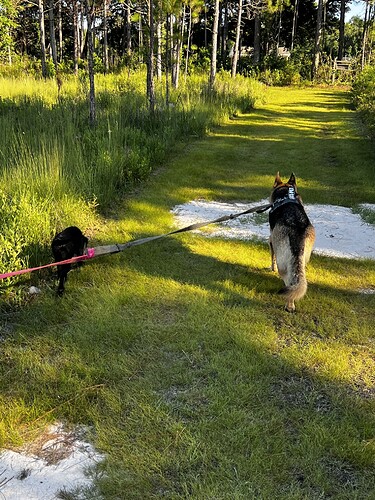Cool bugs …
On an 8.5 mile run with my 13 year old son today. Beautiful foliage…he remarked that it was like a rainforest in parts, especially the swampy regions
@adamjedgar , do you get a chance to see some beautiful Australian nature sights? No pressure…we knew quite a few missionaries from both Australia and New Zealand.
Found a mushroom I’ve been looking for years now. This is the first time I’ve seen one in person. It has heavily reticulated veining along the stalk. It’s the Frost’s Bolete and has a shaggy stalk.
If that’s what it looks like – Japanese knotweed – that’s in the top two worst invasive species in my region, destroying river and estuary ecologies worse than total devastation by fire: after a fire, native species return, but once knotweed gets established it chokes out all other plant life and thus all animal life.
I saw a spider very similar to that ‘walking’ on the water at a swimming hole where I was drifting on an inner tube. It kept going till it encountered a floating leaf, then climbed on. I guessed it was resting, so I gently pushed the leaf to shore.
Sorry, I didn’t get a good enough photo! it’s actually aspen/poplar shoots at the edge of the woods. I can see the similarity, though–on looking it up. I don’t think we have much Japanese knotweed here, yet. Up closer, the leaves are thicker and waxier, and the stems straighter and woodier.
We do have Russian olive, which is taking over a lot.
Thanks.
The only aspen or poplar I’ve seen were at least 10m tall.
Or in firewood-sized chunks – there was a set of aspen trees at the Roman Catholic campus center that the city had told them that the trees had to come down, and the staff couldn’t figure out how to drop them given the location; I talked with one of the trustees and got him to be my ground crew boss – I went up the biggest trunk until it was about as high as I could go without my weight breaking it, hauled up my chainsaw with a rope, attached another rope to the top eight feet then cut beneath the rope so I could lower the top down, after which I worked my way back down cutting off firewood-sized chunks as I went (this was after a tree-removal specialist gave an estimate in high four figures – I took my pay in firewood).
That is one beautiful, strange shroom!
Marpissa muscosa
Dutch: schorsmarpissa (= bark marpissa), marpissa is a genus of jumping spiders (Salticidae)
Jumping spiders are cool.
I encountered an interesting one recently; it had a web like a tunnel, and it lurked off to the side. I presume it pounces on prey and drags it into the tunnel?
White ermine (Spilosoma lubricipeda)
Dutch: witte tijger (= white tiger)
I found out that in Dutch the term “vlinder” (butterfly) can be used for all species of the Lepidoptera order. But in English only the species of the suborder Rhopalocera are called butterflies. Other species are moths.
In Dutch we differentiate between “dagvlinders” (day[time] butterflies, although most people just call them “vlinders”), and “nachtvlinders” (night[time] butterflies). A synonym for nachtvlinder is “mot” (moth).
So in the end it seems that in both languages there is a difference between butterfly and moth. With the difference being that in Dutch moths can also be called butterflies.
I read this on Wikipedia:
Although the rules for distinguishing moths from butterflies are not well established, one very good guiding principle is that butterflies have thin antennae and (with the exception of the family Hedylidae) have small balls or clubs at the end of their antennae. Moth antennae are usually feathery with no ball on the end. The divisions are named by this principle: “club-antennae” (Rhopalocera) or “varied-antennae” (Heterocera).
How reliable is this?
If my memory of a documentary I once watched is correct, that is indeed the case!
What a beautiful creature!
Cute young armadillo in our daughter’s yard.
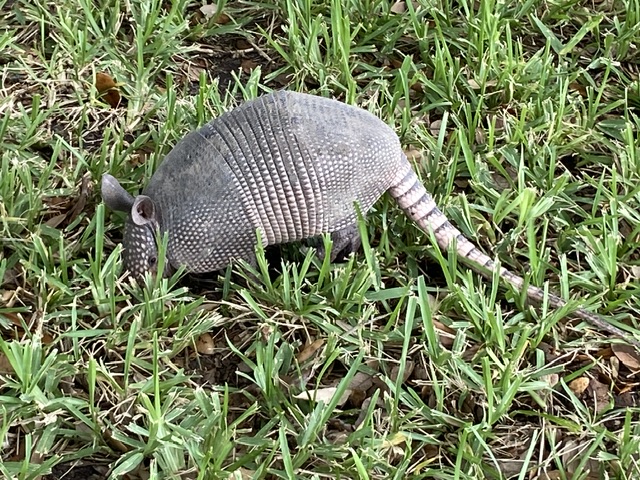
Well, there’s something I’d never see in MY yard!
On a run today-
- Wild rose
- I suspect a type of rose relative, though maybe a wild cherry
- Difficult photo, but some sort of insect nest bubble on the grass, I think (it looks like spittle, but isn’t).
- Raindrops on an aspen leaf with mayflower
- Some sort of red button mushroom, I think. It looked a lot more prominent as a red color among the lush, green leaves on the forest floor.
Went on a nice hike today with my brother and his dogs. About to get super busy again. Since I don’t know a whole lot about working on vehicles, just some basic stuff, decided to go get a part time job at a mechanic shop. Just 4 hours on Thursday and Friday and 10 hours on Saturday. But in for mean on T and F I’ll be working 15 hour long days. But I want to learn more on working on vehicles and so i figure night as well get paid to learn it and create a network of some mechanics so that I can pick their brains when needed.
Randy, I don’t think the fruits are cherries. They look in the photo like they have a calyx on the end of the fruit opposite the stem, where the flower had been – like an apple, or a crab apple.
Cherries are drupes, which are don’t have a calyx on the fruit.
If you open up the fruit, you will get a better idea – calyx outside; inside 5 seeds in a horizontal ring – apple type. One seed in the center and no calyx outside – drupe of some kind (cherry, plum).

